1944-45: Hoover No. 1 twice in Southern California Basketball
It’s a footnote almost forgotten—a rare winning parlay involving a basketball team from San Diego.
The Hoover Cardinals were champions of Southern California and center Dick Barnes was player of the year. One feat had been accomplished, but not two, and not in the same season.
Barnes, a 6-foot, 5-inch center, and his teammates won the third annual Beverly Hills Invitational, the premier prep hoops event in Southern California during World War II.
It wasn’t the Southern Section playoffs, on hiatus in 1944 and ’45, but the tournament had more cachet.
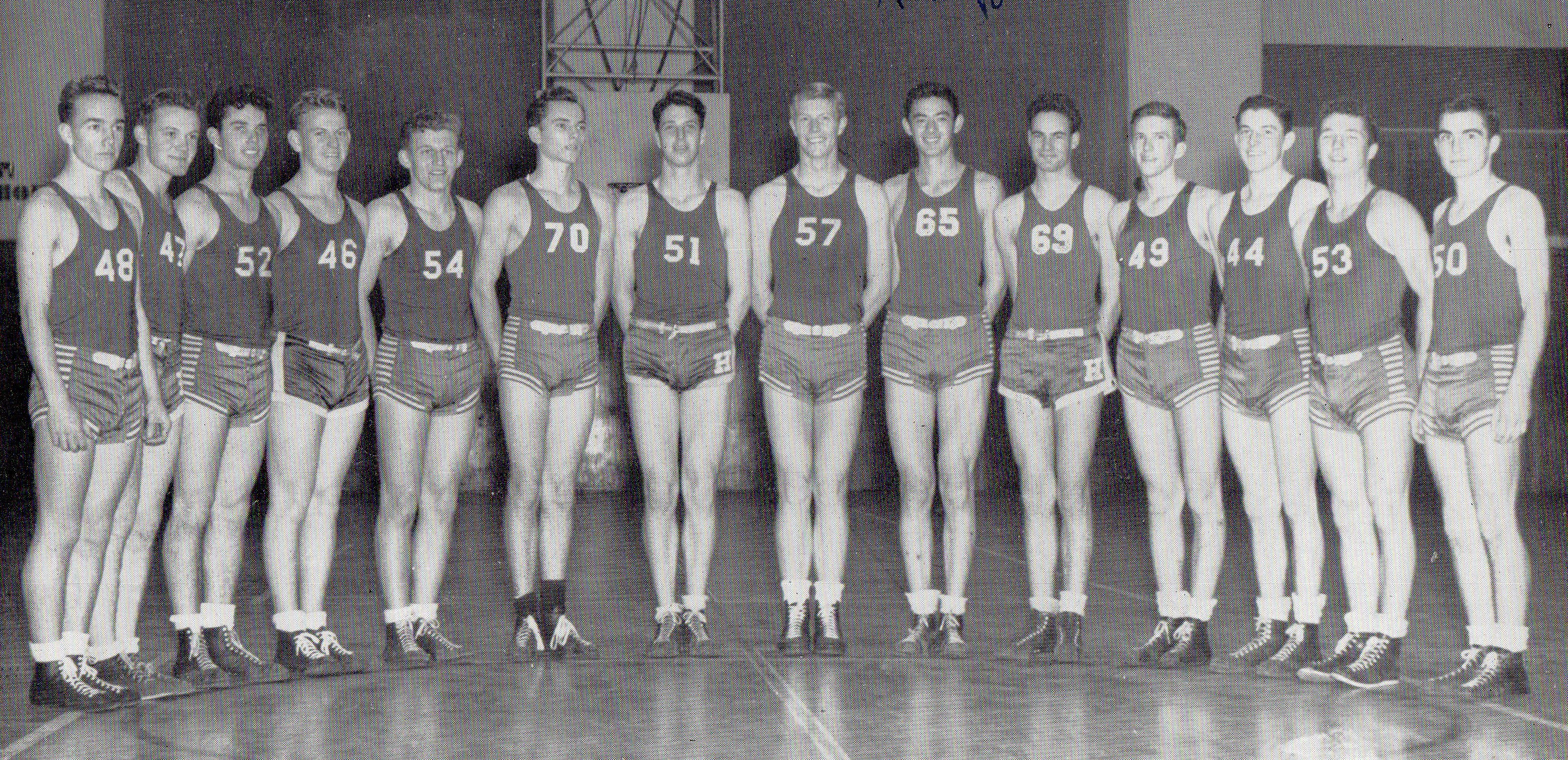
Sixteen of the best teams in the Southland were included in a killer bracket in which the winner would have to play four games in two days at Beverly Hills High.
4 GAMES, 4 WINS
Hoover opened at 4:15 p.m. on Friday, February 24, 1945, against Bay League power Santa Monica.
Barnes stunned the Vikings with a school-record 36 points as the Cardinals eased to a 54-44 victory.
With a couple hours to relax and get a bite to eat, coach Rickey Wilson and players watched Santa Barbara score a 45-27 victory over Redondo Beach Redondo, the Southern Section champion in 1942-43.
Hoover took on Santa Barbara at 9:15 that night. Barnes scored 12 points and the Redbirds won again, 46-36.
The Cardinals were back at it at 2 the next afternoon and Barnes, virtually unstoppable around the basket from his pivot position, scored 18 points in a 46-44, overtime triumph against South Pasadena.
No time for a sit-down, Saturday evening dinner.
The boys tipped again versus Whittier in the championship game at 7 p.m.
Barnes led the way with 21 points for a four-game total of 87 and Hoover earned a 47-36, title-clinching win.
All in a day’s work, or about 30 hours.
HELMS NOTICES
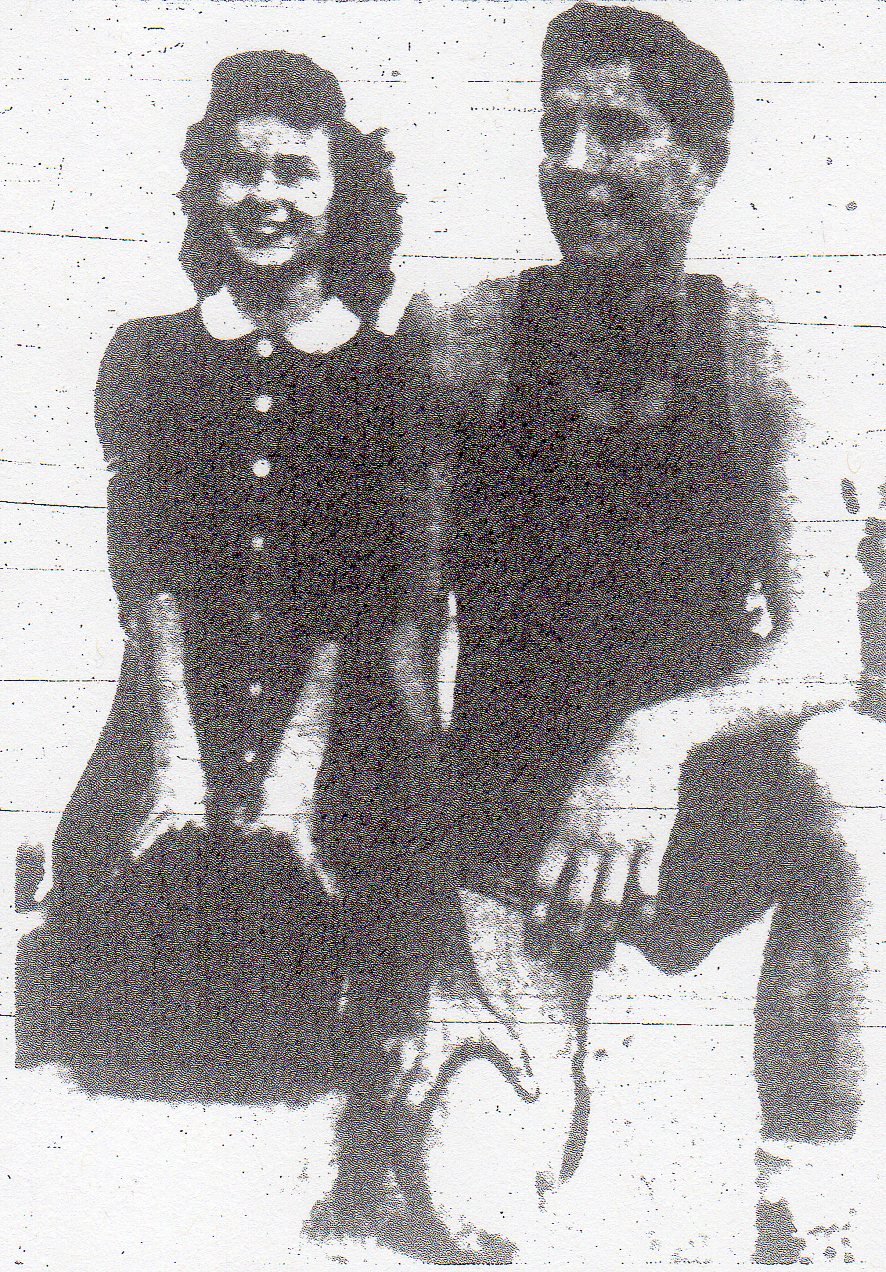
Ten days later the Helms Athletic Foundation not surprisingly announced that Barnes was the Southern California player of the year.
Barnes was the only major division player to capture the individual honor during San Diego’s Southern Section association, which ended in 1960.
San Diego, in 1935-36, was the only team other than the Cardinals to win the major championship.
Hoover also had won the first Beverly Hills tournament in 1943, the competition lessened by the still-operating Southern Section playoffs.
Head coach Rickey Wilson stuck around through the 1945-46 season and then moved to Amherst College in Massachusetts.
HUGE CROWD
Hoover finished with a 16-2 record, including an 8-0 run through the Victory League.
The only losses were 40-36 to an alumni squad and 26-25 to San Diego in the Victory League preseason tournament.
The Cardinals had lost four of the previous five to San Diego but swept the Hilltoppers in league play, 39-28 (Bob Kuykendall scored 20), and 29-24.
The second game at Hoover was played before a turnaway crowd of 2,000 persons, according to Bob Lantz, The San Diego Union correspondent.
TROUBLE ON THE HILLTOP
Hoover’s victory over San Diego brought to light a simmering issue at San Diego High, where coach John Brose, faced with a “strike” by five players, didn’t blink.
“We’ll carry on with a better spirit and healthier attitude than before,” said Brose after five players who did not practice on Monday, had met secretly, and turned in their gear.
The players included Tom Powell, the Victory League’s leading scorer in football and a starting center for Brose; Mario Lopez, Jack Harshman, a future major league outfielder-pitcher; John Herman, and Fontelle Kennerly.
All of the players either were starters or saw regular playing time, according to The San Diego Union.
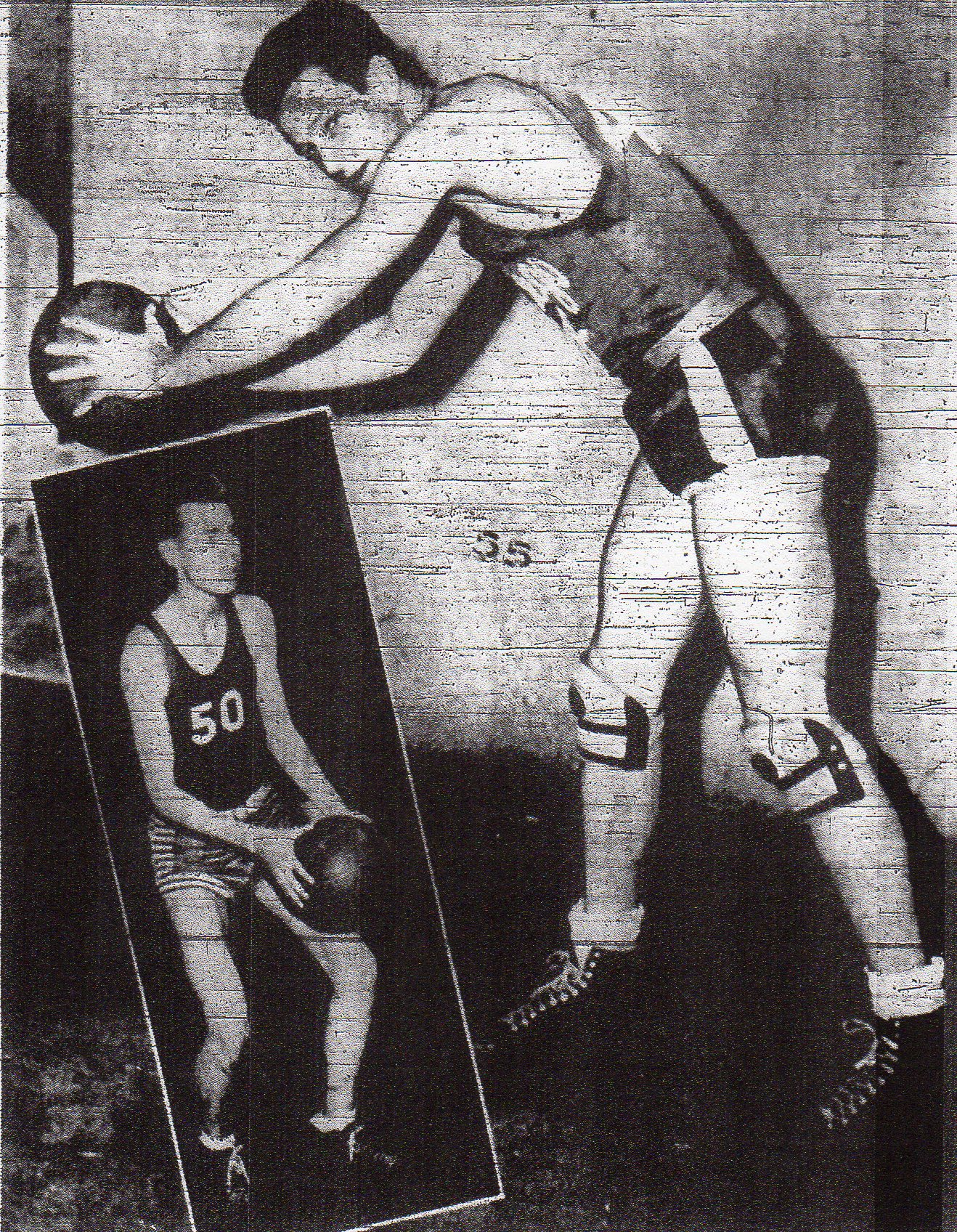
Trouble apparently had been brewing all season and came to a head after the five-point loss to Hoover.
Brose had criticized his team for its “indifferent attitude and listless play” and then announced before the Hoover game that he was benching all of his starters, except team captain Powell.
Brose inserted the rest of the regulars in the second quarter, but played his reserves most of the second half as Barnes scored 19 points and kept the Cardinals in command.
None of the San Diego players returned. Brose promoted second stringers and the Hillers still won seven of their last nine games, including 5 out 6 in the league to finish in a tie for second with Coronado at 6-2. They were 15-6 overall.
HOW STRICT?
Wartime travel restrictions forced cancelation of an early December game at Hoover against Redondo.
The Seahawks would have had to travel 120 miles each way, a journey close to 3 hours each way. A CIF travel limit of 25 miles apparently still was in effect, although CIF schools had been slowly loosening the travel edict.
Long Beach Poly, Los Angeles Mt. Carmel, and Fallbrook had come south for games during the football season and Hoover had visited Redondo.
Victory in Europe was achieved on May 8, 1945, and in Japan on Aug. 15, 1945.
DISTANCE QUESTION
Dick Jackson’s set shot in overtime gave San Diego a 17-15 victory over Sweetwater. The Union declared that Jackson’s attempt was launched from 20 feet.
The perhaps more partisan San Diego High Russ said Jackson’s shot, with three seconds remaining in the extra session, was a 30-footer.
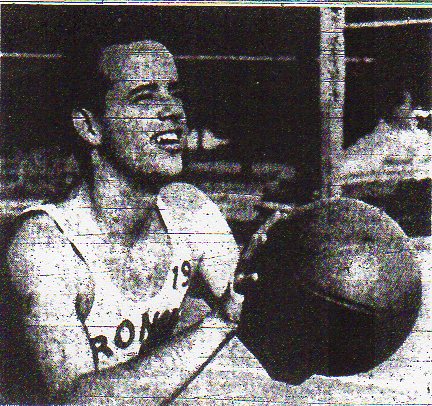
KEEP THE DOORS OPEN
Basketball was a Hoover thing.
Cardinals principal Floyd Johnson, with some urging from coach Rickey Wilson, reached an agreement with the recreation department to open the Hoover gymnasium on Monday, Tuesday, and Thursday nights from 6:30 to 9:30.
The facility, largest in the city, with bleachers and a balcony on the east side of the building, and bleachers on the opposite side, would be open to all “junior and senior high boys throughout the city.”
Basketball edifices in the city were not plentiful. Gymnasiums existed at Hoover, San Diego, San Diego State, and at the municipal facility in Balboa Park.
La Jolla, San Diego Vocational, and Point Loma played their homes games on outdoor courts and had to reschedule “rained-out” contests in February.
SIGNS OF THE TIME
The Hillcrest-Five Points “Little Freeway” on Washington Street opened in February.
The four-lane thoroughfare between Mission Hills and the bayfront area included a bus route for defense workers coming from the northern and eastern sectors of the city.
The part-time route would be in effect when shifts were changing at Consolidated, Ryan, and Solar aircraft plants.
Traffic signals were to be put in place on Washington Street at Hawk and Ibis, Harbor Drive at 32nd Street, Boundary and Maple, Laurel and Commonwealth, Covington Road at Boundary, and at 32nd and Commercial.
The lights were part of a “catching up” program that had been delayed by war production board restrictions.
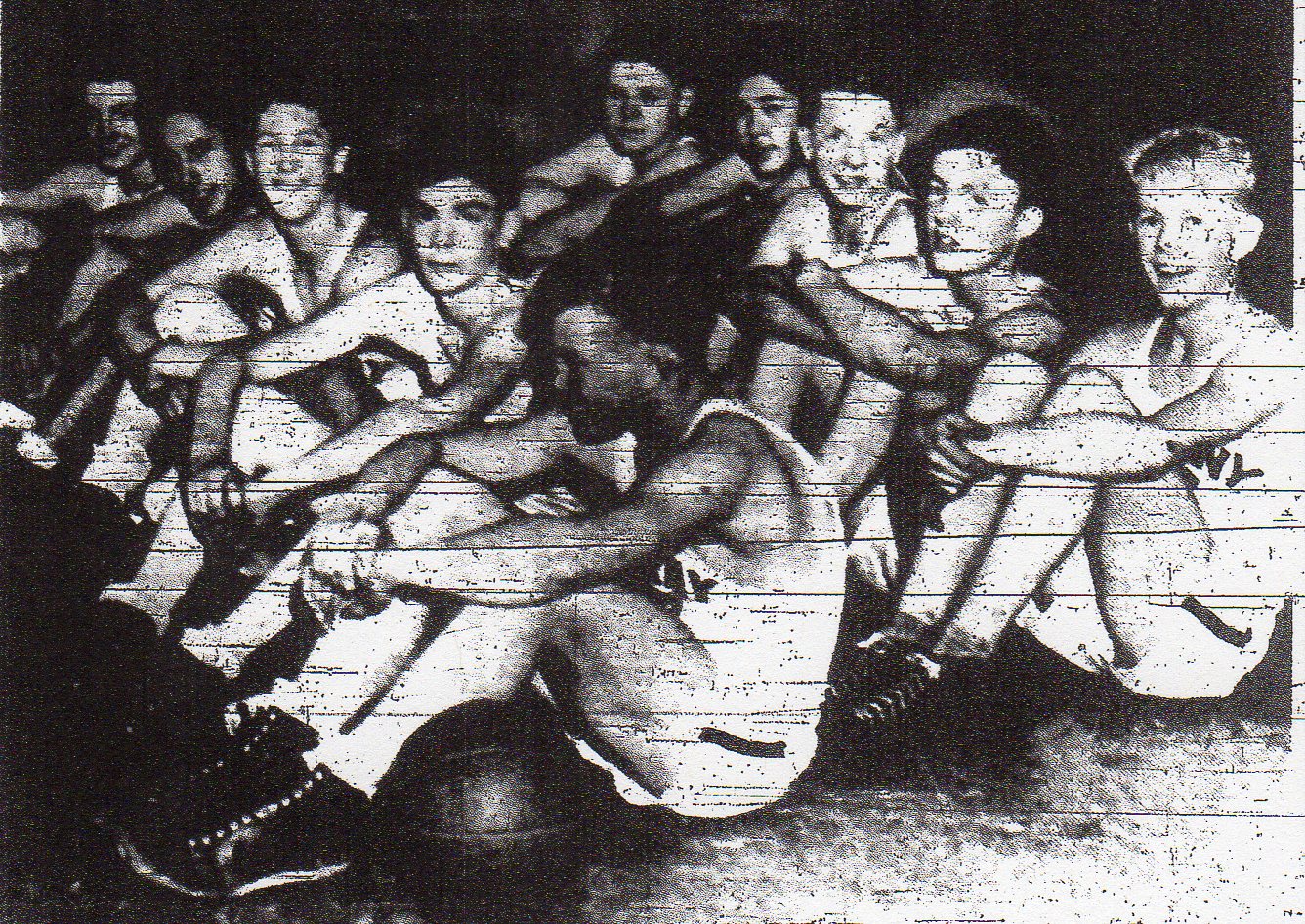
SET SHOTS
.Hoover’s player of the year was the same Dick Barnes who was the first player from San Diego drafted by a National Basketball Association team, in the fifth round by the New York Knickerbockers in 1950. Barnes played at San Diego State following Hoover but passed on the NBA…Peggy Brose, the daughter of San Diego coach John Brose, was an honored, longtime coach of girls’ high school basketball a generation later in San Diego…an up and comer at Point Loma was sophomore Don Larson (sic), better known as Don Larsen, who pitched the first perfect game in the World Series for the New York Yankees in 1956…Kearny principal Edward Taylor, the man behind the creation of the annual City football carnival in 1939, spoke of Victory League schools forming their own section, apart from commissioner Seth Van Patten’s Southern Section…Taylor was quoted in The San Diego Union of Jan. 10, 1945, about an upcoming meeting of league bosses at which the idea would be discussed…no information came out of the meeting to indicate the idea was just that, an idea…Coronado coach Hal Niedermeyer thought that the 13 points George Masek scored against Vocational represented the highest point total ever for a Coronado player at the guard position in Niedermeyer’s 16 seasons….